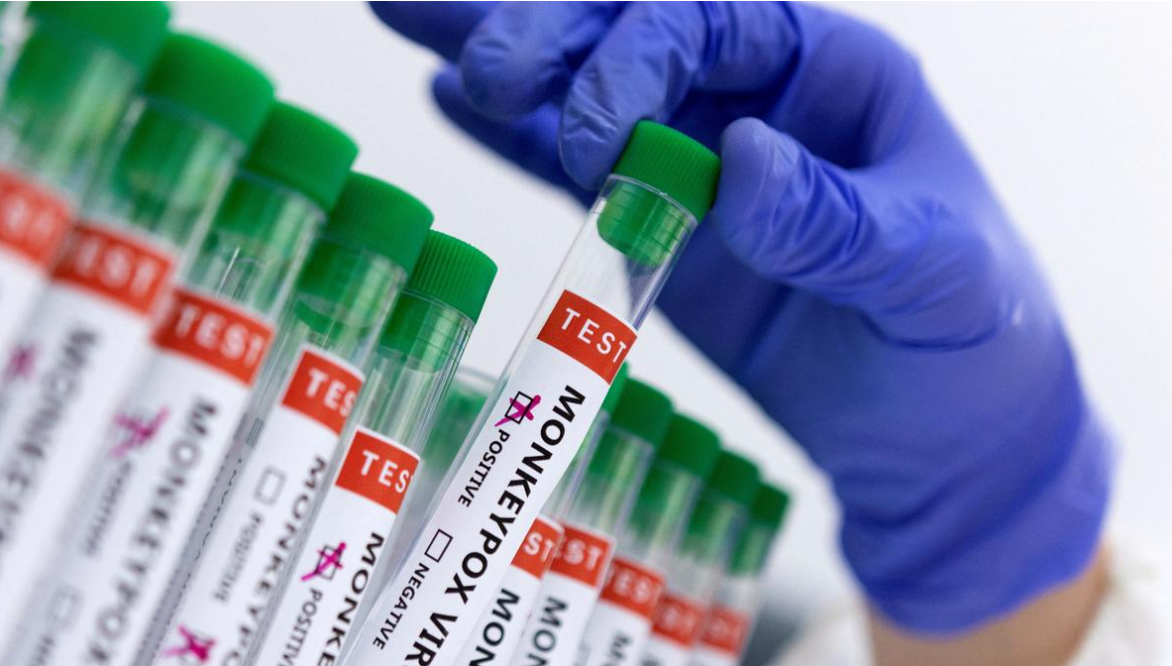The risk of a large mpox outbreak in India remains low, according to a recent statement from a Health Ministry official. While the disease, previously known as monkeypox, has been causing concern globally, particularly in Africa, the Indian government is closely monitoring the situation. The Health Ministry’s assessment comes amid reports of a virulent strain of mpox circulating in the Democratic Republic of Congo (DRC) and more than a dozen other African countries. As of now, no cases have been reported in India, but the authorities are not taking any chances, ramping up surveillance and preparedness to ensure the country remains protected.
This article provides a comprehensive analysis of the current mpox situation, exploring the nature of the virus, its transmission dynamics, global trends, and the measures India is taking to prevent an outbreak. We also delve into the broader implications of the disease and what the low risk assessment means for public health in India.
Understanding Mpox: The Virus and Its Transmission
Mpox, also known as monkeypox, is a viral zoonotic disease caused by the mpox virus, which belongs to the Orthopoxvirus genus in the Poxviridae family. The disease was first identified in humans in 1970 in the DRC, and since then, it has been reported in several Central and West African countries. Mpox is similar to smallpox but generally less severe. It is characterized by symptoms such as fever, rash, and swollen lymph nodes, which can progress to more severe forms in some cases.
The virus is primarily transmitted to humans from animals, with rodents and primates being the most common sources. Human-to-human transmission can occur through direct contact with bodily fluids, respiratory droplets, or contaminated objects such as bedding. The incubation period for mpox typically ranges from 6 to 13 days but can extend up to 21 days.
While the majority of mpox cases are reported in Africa, recent years have seen sporadic outbreaks in other regions, including Europe and North America. These outbreaks have raised concerns about the potential for the virus to spread to other parts of the world, including India.
Global Situation: Mpox in Africa and Beyond
The current global concern over mpox stems from the spread of a particularly virulent strain of the virus in the DRC and several other African countries. The DRC has historically been the epicenter of mpox outbreaks, with the virus circulating endemically in certain regions. The ongoing outbreak in the DRC has been particularly severe, with a higher number of cases and fatalities compared to previous years.
In addition to the DRC, mpox cases have been reported in more than a dozen other African countries, including Nigeria, Cameroon, and the Central African Republic. These outbreaks have been linked to the movement of infected animals and increased human-to-human transmission in densely populated areas.
Outside Africa, mpox has been detected in countries like the United Kingdom, the United States, and Israel, primarily linked to travelers returning from endemic regions. While these cases have been contained with swift public health responses, they underscore the potential for the virus to spread internationally.
India’s Preparedness and Response
In light of the global mpox situation, India’s Health Ministry has been proactive in its approach to preventing an outbreak. Despite the low risk of a large outbreak, as stated by the Health Ministry official, the government is taking several precautionary measures to ensure the country remains safe.
1. Enhanced Surveillance and Monitoring:
The Health Ministry has ramped up surveillance efforts across the country, particularly at points of entry such as airports and seaports. Travelers returning from countries with reported mpox cases are being closely monitored, and anyone showing symptoms of the disease is being isolated and tested. The government has also issued advisories to state health departments to be vigilant and report any suspected cases immediately.
2. Public Awareness Campaigns:
To prevent panic and misinformation, the Health Ministry has launched public awareness campaigns about mpox. These campaigns focus on educating the public about the symptoms of mpox, modes of transmission, and preventive measures. The Ministry has also provided guidelines for healthcare providers on how to identify and manage suspected cases.
3. Strengthening Laboratory Capacity:
India’s network of laboratories, including those under the Indian Council of Medical Research (ICMR), has been equipped to diagnose mpox cases. The National Institute of Virology (NIV) in Pune is leading the efforts to ensure that diagnostic facilities are available across the country. This will enable quick detection and isolation of any potential cases, minimizing the risk of spread.
4. Coordination with International Agencies:
India is working closely with international health agencies, including the World Health Organization (WHO), to stay updated on the global mpox situation. The Health Ministry is in constant communication with the WHO’s regional office to ensure that India’s response aligns with global best practices.
5. Stockpiling Vaccines and Antivirals:
Although there is currently no specific vaccine for mpox, the smallpox vaccine has shown to provide some cross-protection against mpox. India is exploring options to stockpile smallpox vaccines as a precautionary measure. Additionally, the government is considering the procurement of antiviral drugs that have been found effective against orthopoxviruses.
Why the Risk of a Large Outbreak is Low in India
Several factors contribute to the Health Ministry’s assessment that the risk of a large mpox outbreak in India is low at present. These include India’s geographical distance from the current epicenters of the virus, the country’s experience in managing infectious disease outbreaks, and the measures already in place to prevent the virus from entering and spreading within the country.
1. Geographical Distance:
India’s geographical distance from Africa, where the current mpox outbreaks are concentrated, plays a significant role in reducing the risk of the virus reaching Indian shores. The virus is primarily transmitted through direct contact with infected animals or humans, making it less likely to spread over long distances without a significant travel-related event.
2. Robust Public Health Infrastructure:
India has a robust public health infrastructure, with experience in managing outbreaks of infectious diseases such as COVID-19, Nipah virus, and Zika virus. The country’s ability to quickly mobilize resources, implement quarantine measures, and conduct mass testing has been demonstrated in previous outbreaks, and these capabilities will be crucial in managing any potential mpox cases.
3. No Cases Reported So Far:
As of now, no mpox cases have been reported in India. This indicates that the virus has not yet entered the country, giving the government more time to prepare and implement preventive measures. The absence of cases also suggests that the virus is not circulating in the Indian population, further reducing the risk of a large outbreak. 
4. Public Awareness and Cooperation:
Public awareness and cooperation are key factors in preventing the spread of infectious diseases. The Health Ministry’s efforts to educate the public about mpox, coupled with the public’s willingness to adhere to guidelines, will play a crucial role in keeping the virus at bay. Early reporting of symptoms and prompt medical attention can significantly reduce the risk of transmission.
Potential Challenges and Areas of Concern
While the risk of a large mpox outbreak in India is currently low, there are potential challenges and areas of concern that need to be addressed to ensure the country remains prepared.
1. Travel-Related Cases:
One of the primary risks is the possibility of travel-related cases. With international travel resuming post-pandemic, there is a chance that individuals returning from endemic regions could bring the virus into India. This underscores the importance of maintaining strict surveillance at points of entry and ensuring that travelers are adequately screened.
2. Rural and Remote Areas:
India’s vast rural and remote areas could pose a challenge in the event of an outbreak. These regions may have limited access to healthcare facilities, making it difficult to diagnose and treat cases promptly. Strengthening healthcare infrastructure in these areas and ensuring that they are included in surveillance efforts is essential.
3. Vaccine Hesitancy:
While the smallpox vaccine can provide protection against mpox, vaccine hesitancy remains a concern. Public mistrust of vaccines, fueled by misinformation and rumors, could hinder vaccination efforts in the event of an outbreak. Addressing vaccine hesitancy through transparent communication and public engagement will be crucial.
4. Potential Mutation of the Virus:
Like all viruses, the mpox virus has the potential to mutate. While the current strain circulating in Africa is already virulent, a mutation could potentially make it more transmissible or resistant to existing treatments. Continuous monitoring of the virus’s genetic evolution is necessary to stay ahead of any such developments.
Lessons from the COVID-19 Pandemic
The COVID-19 pandemic has provided valuable lessons that can be applied to the management of mpox. One of the key takeaways is the importance of early detection and swift response. The pandemic highlighted the need for global cooperation, rapid mobilization of resources, and the importance of clear and consistent communication with the public.
India’s experience in handling the COVID-19 pandemic has left it better prepared to deal with future infectious disease threats. The country has strengthened its public health infrastructure, improved its laboratory capacity, and developed more efficient systems for contact tracing and quarantine. These capabilities will be critical in preventing and managing any potential mpox cases.
Conclusion: Vigilance and Preparedness are Key
While the risk of a large mpox outbreak in India is currently low, the Health Ministry’s proactive stance underscores the importance of vigilance and preparedness. The absence of cases so far is a positive sign, but it should not lead to complacency. The global nature of infectious diseases means that the situation can change rapidly, and India must remain prepared to respond to any potential threat.
The government’s emphasis on surveillance, public awareness, and international cooperation will be key to ensuring that India remains protected from mpox. At the same time, addressing potential challenges such as travel-related cases, rural healthcare access, and vaccine hesitancy will be crucial in maintaining the country’s low-risk status.
As the world continues to grapple with the threat of infectious diseases, India’s experience and preparedness will serve as a model for other nations. By staying vigilant and proactive, India can effectively manage the risk of mpox and safeguard the health and well-being of its population. ALSO READ:- Indian Coast Guard Director-General Rakesh Pal Passes Away in Chennai: A Sudden Loss of a Respected Leader 2024





